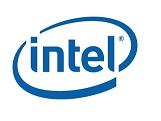Intel’s TV Dream: Crazy Like an Xbox, or Insane Like FLO?
Intel is gearing up to launch a hugely ambitious over-the-top live and on-demand TV service that could be spectacularly disruptive -- or DOA
(see Intel Plans to Launch 'Smart' Internet TV Bundles This Year).
Is it crazy for Intel, a microprocessor manufacturer, to spend millions (hundreds of millions?) to enter the direct-to-consumer video business with its own purpose-built set-top box -- complete with a viewer-detecting camera -- and try to challenge everyone from Comcast to DirecTV, and from Apple to Netflix?
No crazier than Microsoft diving headlong into the videogame-console market a decade ago, according to Intel Media GM Erik Huggers, who outlined the OTT plans in broad strokes on Tuesday.
“Back when I was at Microsoft [where he led the global business development for Windows Media Technologies] they got into gaming devices, and people said, ‘What are you doing?’” he said. “Now it’s a major business.”

Earlier this week, Microsoft announced it has shipped 76 million Xbox game consoles worldwide to date, and the Xbox is growing quickly as a video-entertainment platform.
But of course, there are unfavorable precedents for Intel’s OTT designs -- many companies have embarked on risky new ventures that flopped. One example: Qualcomm’s FLO TV mobile television service, which flamed out after the company poured more than $800 million into the venture.
Qualcomm -- a chip maker, like Intel -- launched FLO TV (formerly called MediaFLO) in 2007 with Verizon, and then with AT&T the following year. The company then tried to introduce its own mobile TV devices in 2009, but pulled the plug in late 2010 after failing to gain subscriber traction. Qualcomm then sold the spectrum to AT&T.
To be sure, subscription mobile TV was a new category Qualcomm was trying to establish, whereas traditional pay TV is mature. All that means is that Intel will face a different challenge, but one that’s not any less daunting: persuading consumers to bail on their current MVPD.
I outlined Intel’s challenges in cracking into the pay-TV sector in this space last month (see Intel's Virtual Cable Service Won't Blow Up the TV Bundle). To recap and update:
- It won’t be less expensive than current MVPD offerings. It’s a full-on TV service, not a “value play,” Huggers confirmed. He did, however, allude to “smarter bundles” that would provide more choices to consumers.
- That creepy spy-camera feature. Back to the Xbox example: Yes, the console’s Kinect attachment does camera-based player recognition already, with no big hue and cry. But TV may be a different case -- people are bound to feel uneasy that Intel is using facial recognition to provide a personalized recommendations or even serve up targeted ads. Look at the uproar Verizon’s patent on a camera-enabled set-top caused (the USPTO rejected it, by the way).
- Programmers don’t want to anger existing distributors. This is actually not as big a hurdle as some might think -- if the price is right, and the rights are available, content owners have no qualms about cutting a deal with a new entrant. The tricky pieces are multiplatform rights, retail packaging terms and how much Intel is willing to spend on content.
- It will have to compete against the triple play. MSOs and telcos have marketing leverage with the triple-play bundle, and they price standalone broadband (required to receive an over-the-top TV service) less attractively. There’s also the question of whether usage caps could inhibit Intel’s service; Huggers sounded optimistic that caps won’t be an issue but we’ll see what happens.
What do you think of Intel’s OTT dreams? Add your comments below.
Follow me on Twitter: @xpangler
Multichannel Newsletter
The smarter way to stay on top of the multichannel video marketplace. Sign up below.



